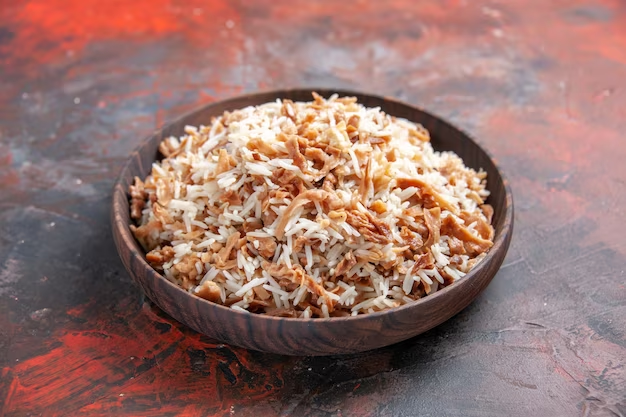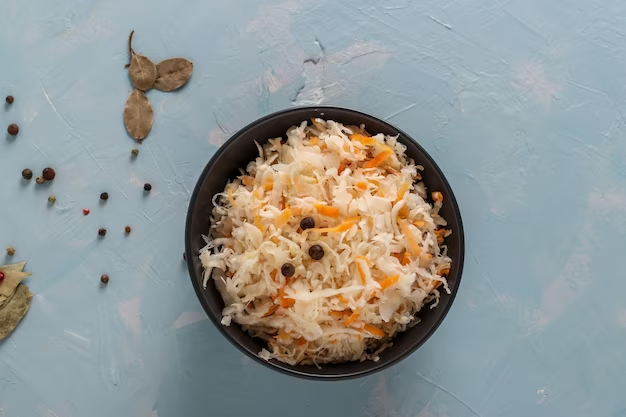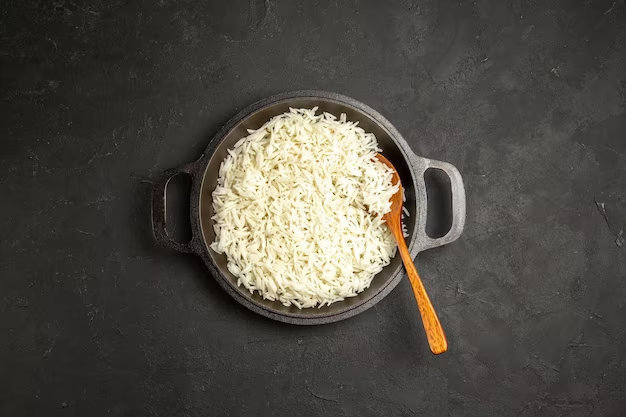Can you eat rice that has been left out overnight?
What is Bacillus Cereus?
Bacillus cereus is a type of bacteria that can be found on various surfaces, including soil, water, and food. It is commonly found in rice, pasta, and other starchy foods. This type of bacteria can produce spores that allow it to survive in harsh environments, which makes it particularly dangerous.

When it comes to food safety, bacillus cereus is a common culprit for food poisoning. This bacteria can produce a toxin that can cause various symptoms, ranging from mild to severe. The symptoms of food poisoning from bacillus cereus usually show up within a few hours to a day after consuming contaminated food.
Some of the most common symptoms of food poisoning caused by bacillus cereus include nausea, vomiting, diarrhea, abdominal cramps, and fever. In more severe cases, the bacteria can cause respiratory problems, seizures, and even death.
To prevent the growth of bacillus cereus and other harmful bacteria, it is essential to properly store, cook, and reheat food. This means storing cooked rice and other starchy foods in airtight containers in the refrigerator within two hours of cooking. It is also critical to reheat food to a safe temperature, which is 165°F or hotter.
In summary, bacillus cereus is a type of bacteria that can cause food poisoning and other health risks. It is crucial to take proper precautions when handling and storing food to prevent the growth of this harmful bacteria.
What Happens if You Eat Rice that Has Been Left Out Overnight?
Have you ever cooked a large batch of rice for dinner and forgot to put it in the fridge before going to bed? Or maybe you had takeout from your favorite Asian restaurant and left the leftovers on the kitchen counter overnight. Either way, you may be wondering if it’s safe to eat rice that’s been left out overnight.
The short answer is that it is not recommended to eat rice that has been left out overnight. According to food safety experts, rice can be a breeding ground for a type of bacteria called Bacillus cereus, which can cause food poisoning. When cooked rice is left out at room temperature for an extended period, it creates the perfect environment for the bacteria to grow and multiply.
The bacterial spores of Bacillus cereus can survive the cooking process, making it important to take extra precautions when handling cooked rice. If the rice is not stored properly in an airtight container and kept at a safe temperature, the bacteria can quickly multiply, increasing the risk of food poisoning.
Symptoms of food poisoning from Bacillus cereus can range from mild to severe and typically present within a few hours to a day after eating contaminated food. Common symptoms include nausea, vomiting, diarrhea, and abdominal cramps. In severe cases, the bacteria can cause respiratory problems, seizures, and even death.
Individuals with compromised immune systems are more susceptible to the effects of bacteria and should take extra precautions when handling food. Children, the elderly, and pregnant women are also at higher risk of experiencing severe symptoms from food poisoning.
To ensure the safety of your rice, it’s important to follow proper food storage and handling guidelines. After cooking rice, store it in an airtight container in the refrigerator or freezer within two hours of cooking. If you plan on eating leftovers, make sure to reheat the rice thoroughly to a safe temperature of 165°F or hotter.
If you’re ever in doubt about the safety of your rice, it’s best to err on the side of caution and throw it away. Additionally, be sure to regularly check the expiration dates on prepackaged rice products and avoid consuming rice that has an off smell or appearance, as these could also be signs of spoilage or bacterial growth.
In conclusion, it’s best to avoid eating rice that has been left out overnight to minimize the risk of food poisoning. Proper storage and handling of rice are crucial to prevent bacterial growth and ensure the safety of your food.
Cooking Process and Bacterial Growth
Cooking is an essential process for making food safe to eat. It not only enhances the flavors and textures of the food but also eliminates harmful bacteria that may be present. However, simply cooking food is not enough to ensure safety, as bacteria can quickly multiply in food if it is not handled properly.

Bacteria are present everywhere – in the air, on our skin, and even in our food. Some bacteria are beneficial, but others can cause illness and even death. Bacteria require specific conditions to grow, and the temperature and moisture of food provide the perfect environment for bacteria to thrive.
When it comes to cooking, it’s crucial to follow proper food handling and storage guidelines to prevent bacterial growth that can cause food poisoning. Raw food, such as meat and vegetables, should be washed thoroughly before cooking to remove any surface bacteria. Additionally, it’s essential to cook food to the correct temperature to destroy bacteria.
It’s important to note that some bacteria, such as Bacillus cereus, produce spores that can survive the cooking process. Spores are more resistant to heat and other external conditions, and can eventually cause illness if the environment is favorable for their growth. This means that even cooked food can harbor harmful bacteria if it is not stored properly.
If food is left out at room temperature for an extended period, bacteria can quickly multiply, increasing the risk of food poisoning. This is why it’s essential to store food properly to prevent bacterial growth. Cooked food should be stored in airtight containers and refrigerated or frozen within two hours of cooking.
It’s also essential to reheat food thoroughly before consuming it. This ensures that any bacteria present are destroyed, and the food is safe to eat. Use a food thermometer to ensure that the food reaches a safe temperature of 165°F or hotter.
In conclusion, cooking is an essential process for making food safe to eat. However, it’s important to follow proper food handling and storage guidelines to prevent bacterial growth that can cause food poisoning. Be vigilant about food safety, and always make sure to handle and store food properly to keep yourself and your loved ones safe from harmful bacteria.
How Does the Cooking Process Affect Bacterial Growth?
Have you ever wondered how the cooking process affects bacterial growth in food? The answer is crucial for ensuring food safety and avoiding the risks of food poisoning.
The cooking process can have a significant impact on the growth and survival of bacteria in food. When food is cooked at high temperatures, it can kill most bacteria that may be present. Heat denatures or destroys the proteins within the bacteria, rendering them unable to function and reproduce. In addition, cooking can also evaporate moisture that bacteria need to grow and multiply, further reducing their ability to survive.
However, it’s important to note that not all bacteria can be killed by cooking. As mentioned earlier, some bacteria produce spores that may survive the cooking process. If the spores are not destroyed or inhibited, they can start growing and developing into harmful bacteria once the temperature and other conditions are favorable. Bacillus cereus, for example, is a common culprit in foodborne illness from cooked rice and other grain-based products.
The cooking method and temperature also play a vital role in preventing bacterial growth. Different types of bacteria have different temperature requirements, and some may even thrive in certain temperature ranges. For instance, Staphylococcus aureus, a food poisoning bacteria commonly found on skin and hair, can reproduce rapidly at room temperature, making it more likely to cause illness when food is left out for too long.

When cooking food, it’s crucial to ensure that it is fully cooked to the appropriate internal temperature to kill bacteria. Different types of food have different safe temperature ranges, as measured by a food thermometer. For example, fish should be cooked to 145°F, while ground beef should be cooked to 160°F. It’s also important to avoid cross-contamination by washing hands, utensils, and surfaces that come into contact with raw meat or other contaminated food.
In conclusion, the cooking process can greatly affect bacterial growth in food. Proper cooking and temperature control are essential to ensure food safety and prevent the risks of food poisoning. Remember to cook food thoroughly, use a food thermometer, and store food properly to avoid contamination and the growth of harmful bacteria.